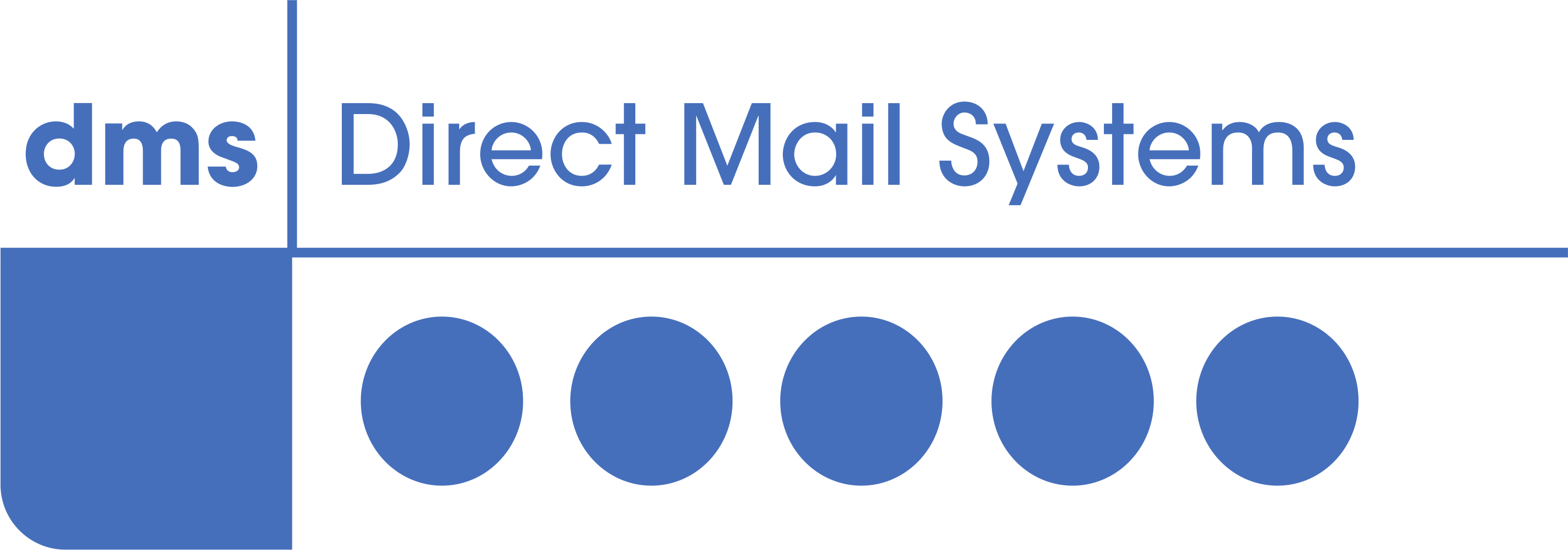Direct mail can be a highly effective and engaging way to reach new and existing customers. However, like any marketing effort, managing costs and creating a proper budget for direct mail campaigns is crucial for success, ensuring a positive return-on-investment (ROI). In this blog, we will explore the budgeting and cost management strategies necessary to make direct mail a sustainable and cost-effective part of your marketing strategy.
- Why Direct Mail Marketing Still Matters
- Understanding Direct Mail Costs
- Direct Mail Budgeting
- Cost-Effective Strategies for Direct Mail Marketing
- Send Direct Mail with DMS
Why Direct Mail Marketing Still Matters
Before diving into cost management, it's important to emphasise why direct mail is worth budgeting for in the first place. Tangible and personalised, direct mail has an emotional appeal that often surpasses digital marketing in driving action. For example, where email open rates can be as low as 20%, direct mail often yields higher engagement.
According to the Direct Marketing Association (DMA), direct mail achieves a response rate of 4.9% for prospect lists and 9% for house lists. Additionally, 73% of consumers prefer direct mail for brand communication because it feels more personal and trustworthy.
Direct mail therefore gives brands an opportunity to make an impact in a less crowded space compared to the saturated inboxes or social media feeds of modern consumers. However, this advantage comes with costs, so understanding how to effectively manage these costs can make the difference between a profitable campaign and a financial loss.
Understanding Direct Mail Costs
The first step to managing your direct mail marketing budget is understanding the different components that contribute to the overall cost. Unlike digital campaigns, where costs might be more variable and depend largely on impressions and clicks, direct mail has fixed, tangible costs that must be accounted for in your budget.
Design & Creative
Whether you're creating a postcard, brochure, or catalogue, a strong design is essential to capturing attention. Costs here can vary depending on whether you have an in-house design team or outsource the work to an agency. You may also need to pay for copywriting, photography, or graphic design services.
Printing
Printing costs depend on the size, paper quality, colour scheme, and print finishes like embossing or varnishes. Smaller print runs typically have higher per-piece costs, so if your campaign is on a larger scale, it may be more cost-effective to print in bulk.
Mailing Lists
If you're using direct mail to target prospects, purchasing a mailing list is a key cost. Depending on the quality and specificity of the list, prices can range from £0.03 to £0.50 per contact. A highly targeted list is usually more expensive, but it may result in higher response rates, making it more cost-effective in the long run.
If you have your own customer list, then investing the time and money into cleaning up your list is worthwhile. Removing duplicates, fixing spelling mistakes or removing people who have moved addresses or are no longer subscribed is essential.
Postage
This is often the largest cost in a direct mail campaign. Postage rates vary based on the size, weight, and format of your mail piece. Royal Mail offers discounted rates for bulk mail, which can help reduce costs, but these rates still need to be factored into your overall budget.
Fulfilment
Fulfilment costs include sorting, addressing, and preparing your mail for delivery. Many direct mail houses offer comprehensive fulfilment services which will be an additional cost, which often varies based on the complexity of your campaign, the volume of mail, and any special handling instructions.
Tracking & Reporting
To accurately assess the ROI of your campaign, it’s important to track response rates and conversions. You may need to invest in software or services that provide detailed analytics on your mailings, such as call tracking or unique URLs. This data is crucial for refining future campaigns, justifying the spend and for setting future budgets.

Budgeting Strategies for Direct Mail
Here are some ways to ensure cost-effectiveness in your direct mail marketing efforts.
Smarter Targeting
Narrowing down your target audience can significantly reduce your mailing list and printing costs. Sending personalised mailers to a smaller, more relevant audience is often more cost-effective than blasting a generic message to a large group, improving your ROI.
Use Postcard Mailers
Postcards are typically cheaper to print and mail compared to letters or catalogues, as they don’t require envelopes and less ink. If your message can be effectively conveyed on a postcard, this is a great way to cut costs.
Opt for Bulk Mailing
Taking advantage of bulk mail discounts can save you significant money on postage. Work with a direct mail house that specialises in bulk mailing to navigate the requirements and ensure you're getting the best rates.
Test First
Run small test campaigns before committing to a full-scale rollout. This allows you to see which designs, messaging, and lists perform best, helping you avoid costly mistakes on a larger scale.
Leverage Variable Data Printing (VDP)
VDP allows you to personalise mail pieces with specific names, offers, or images, making each recipient feel special without creating completely unique designs. This can boost response rates and ROI, making the additional cost worthwhile.

Send Direct Mail with DMS
DMS is a direct mailing house that has extensive experience in printing, posting and fulfilling direct mail campaigns for top organisations and brands, across multiple industries. We use top-of-the-range equipment and technology to provide our clients with high quality results with cost-effective prices and can support you with your entire campaign or at certain points. Whether it's data processing, bulk postage or printing, we are here for you.
For more information and to speak to one of our knowledgeable team, get in touch by clicking here.


